Day: January 13th, 2007
Still Spicy & Tasty
I’d been wanting to return to Flushing’s Spicy & Tasty since getting my first taste in November, and this Satuday I was finally able to round up a couple of friends to join me. The plan was set. That afternoon, SYB emerged briefly from quarantine for the occasion; unfortunately, though, HYB had to drop out at the last minute. So the two of us forged recklessly ahead, ordering dishes as if he were there with us… plus his three very hungry friends.
We briefly assessed the cold appetizer displays up front: dishes of tendon (or “tender” as it appeas on the menu), Chinese eggplant, shredded bean curd, smoked fish, tripe, seaweed, bamboo shoots, bitter melon, jellyfish…
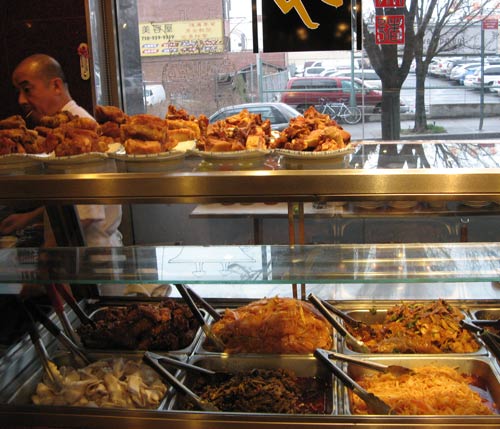
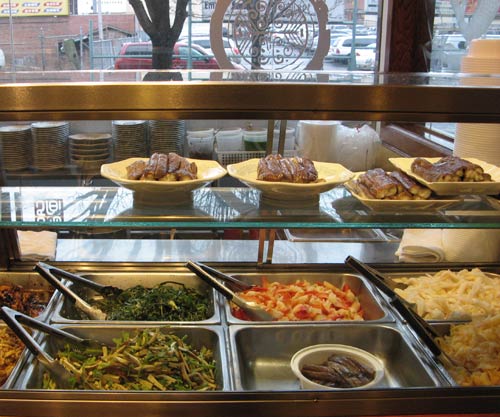
We could easily have made a meal of the cold offerings, but once seated, we decided to focus on the main dishes. Our meal began tamely with the Sesame Cold Noodles (which for once didn’t taste suspiciously of Skippy peanut butter) and the Steamed Dumplings in Red Chili Sauce. Soon, the other dishes began arriving, raising the heat level significantly. The Bean Curd Home Style (Ma Po Doufu), swimming in red-hot chili oil, Lamb with Chili Pepper (lots and lots of chili pepper) and Chinese String Bean with Minced Pork. We ran out of room on the two-top table! After some plate juggling, the server moved us to another, larger space across the room.
Beads of sweat formed on SYB’s brow, but he seemed to relish the food, which was, yes, very spicy and very tasty. The layered combinations of dried and fresh chilis, rice wine vinegar, sesame and chili oils, Sichuan and black peppercorns, scallions, ginger and garlic set our eyes and noses watering and tongues afire.
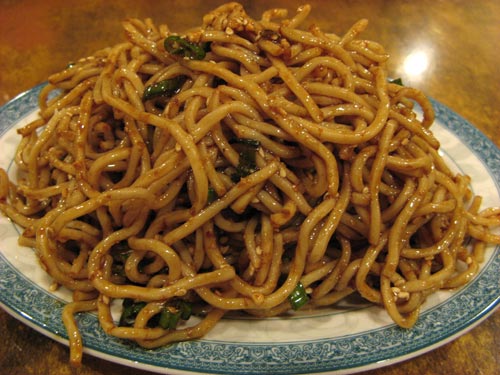
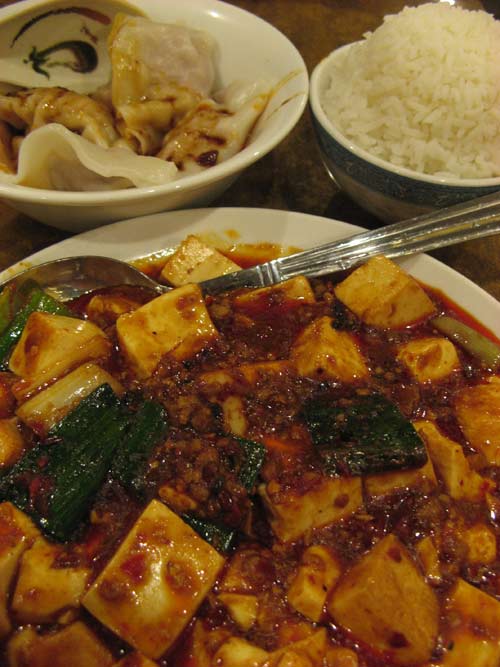
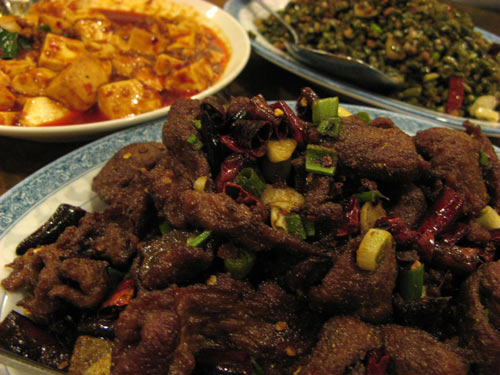
Sichuan pepper (Zanthoxylum piperitum) is native to Northern China. The species is not related to black pepper (peper nigrum), which is native to India. Sichuan peppercorns are, in fact, not peppers at all, but the burr-like casings of Chinese prickly ash tree berries. In 1968, the peppercorns were officially banned from import by the USDA and FDA as carriers of bacteria that could potentially harm the foliage of citrus crops in the United States. Despite the decades-long ban, the reddish-brown peppercorns remained generally available in most Chinese markets. Grand Sichuan International (the 4-restaurant chain largely credited with repopularizing Sichuan cuisine in New York City) continued to rely heavily on the ingredient in its preparations. The ban was lifted in May 2005 when the governement approved a heat treatment — exposure at 140 degrees Fahrenheit for 20 minutes — that would effectively destroy the canker virus, rendering the berries safe for import.
The peppercorns themselves are highly aromatic with slight lemony overtones, and not nearly as hot or pungent as black or white pepper, or most chili peppers. The berries are characterized by the tingly numbing sensation they create on the tongue, an effect which can be disconcerting upon first experience. The effect is derived not from capsaicin, but from hydroxy-alpha-sanshool (HO-alpha-S), which acts as a mild contact anesthetic and sets the stage for the building heat and flavor of the accompanying red chilis that are the trademark of Sichuan cuisine.
After some cooling dessert, SYB went home with the copious leftovers to recover, while I moved on to sweeter things to end my night: CS’s birthday soiree at Sugar Bar.
Search
Popular Tags
Categories
Archive
- July 2010
- July 2009
- January 2009
- November 2008
- September 2008
- August 2008
- July 2008
- June 2008
- May 2008
- April 2008
- March 2008
- February 2008
- January 2008
- December 2007
- November 2007
- October 2007
- September 2007
- August 2007
- July 2007
- June 2007
- May 2007
- April 2007
- March 2007
- February 2007
- January 2007
- December 2006
- November 2006
- October 2006
- September 2006
- August 2006
- July 2006
- June 2006